

Algorithms and Data Structures are a crucial component of any technical coding interview. It does not matter if you are a C++ programmer, a Java programmer, or a Web developer using JavaScript, Angular, React, JQuery, or any other programming language. A programmer should have a thorough understanding of both basic data structures, such as arrays, linked lists, trees, hash tables, stacks, and queues, etc. and conventional algorithms, such as Binary Search, Dynamic Programming, and so on. Therefore, in this article we would be mostly focussing on Algorithms - an introduction to algorithms, a lot of algorithms interview questions which are being asked in the coding interviews of various companies and also a few Algorithms MCQs which we think everyone should practice in order to have a better understanding of algorithms. Now, the very first question which must be popping in your head must be "What is an algorithm?" Well, the answer to this question is: An algorithm is a finite sequence of well-defined instructions used to solve a class of problems or conduct a computation in mathematics and computer science. Algorithms are used to specify how calculations, data processing, automated reasoning, automated decision making, and other tasks should be done. An algorithm is a method for calculating a function that can be represented in a finite amount of space and time and in a well defined formal language. The instructions describe a computation that, when run, continues through a finite number of well defined subsequent stages, finally creating "output" and terminating at a final ending state, starting from an initial state and initial input (possibly empty). The shift from one state to the next is not always predictable; some algorithms, known as randomised algorithms, take random input into account.
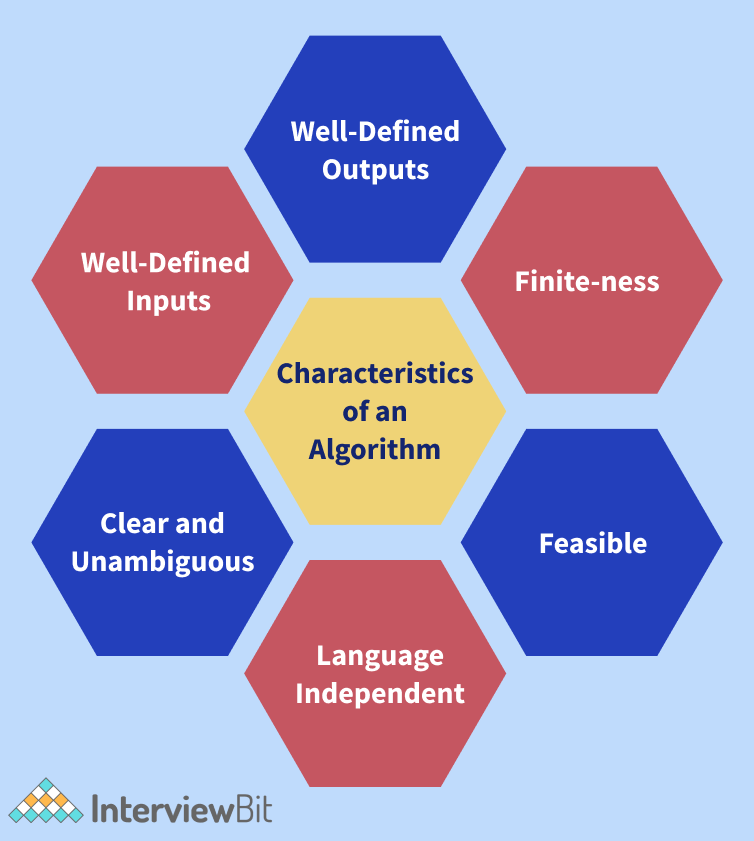
Before diving deep into algorithm interview questions, let us first understand the need for Algorithms in today's world. The following are some of the benefits of using algorithms in real-world problems.
The complexity of an algorithm is a technique that is used to categorise how efficient it is in comparison to other algorithms. It focuses on how the size of the data set to be processed affects execution time. In computing, the algorithm's computational complexity is critical. It is a good idea to categorise algorithms according to how much time or space they take up and to describe how much time or space they take up as a function of input size.
Create a free personalised study plan Create a FREE custom study plan Get into your dream companies with expert guidance Get into your dream companies with expert.. Real-Life Problems Prep for Target Roles Custom Plan Duration Flexible PlansNote: Nowadays, a lack of space is rarely an issue because computer storage is plentiful. Therefore, it is mostly the Time Complexity that is given more importance while evaluating an Algorithm.
Depth First Search or DFS is a technique for traversing or exploring data structures such as trees and graphs. The algorithm starts at the root node (in the case of a graph, any random node can be used as the root node) and examines each branch as far as feasible before retracing. So the basic idea is to start at the root or any arbitrary node and mark it, then advance to the next unmarked node and repeat until there are no more unmarked nodes. After that, go back and check for any more unmarked nodes to cross. Finally, print the path's nodes. The DFS algorithm is given below:
BFS or Breadth-First Search is a graph traversal technique. It begins by traversing the graph from the root node and explores all of the nodes in the immediate vicinity. It chooses the closest node and then visits all of the nodes that have yet to be visited. Until it reaches the objective node, the algorithm repeats the same method for each of the closest nodes.
The BFS Algorithm is given below:
An algorithm for string reversal is as follows:
Dynamic Programming is primarily a recursion optimization. We can use Dynamic Programming to optimise any recursive solution that involves repeated calls for the same inputs. The goal is to simply save the results of subproblems so that we do not have to recalculate them later. The time complexity of this simple optimization is reduced from exponential to polynomial. For example, if we create a simple recursive solution for Fibonacci Numbers, the time complexity is exponential, but if we optimise it by storing subproblem answers using Dynamic Programming, the time complexity is linear.

The following codes illustrate the same:
With Recursion (no DP): The time complexity of the given code will be exponential.
/*Sample C++ code for finding nth fibonacci number without DP*/ int nFibonacci(int n)< if(n == 0 || n == 1) return n; else return nFibonacci(n - 1) + nFibonacci(n - 2); >With DP: The time complexity of the given code will be linear because of Dynamic Programming.
/*Sample C++ code for finding nth fibonacci number with DP*/ int nFibonacci(int n)< vectorint> fib(n + 1); fib[0] = 0; fib[1] = 1; for(int i = 2;i 1] + fib[i - 2]; > return fib[n]; >A few problems which can be solved using the Dynamic Programming (DP) Algorithmic Paradigm are as follows:
An algorithm for counting the number of leaf nodes in a binary tree is given below:
An algorithm for adding a node to a link list sorted in ascending order (maintaining the sorting property) is given below:
To apply binary search on a list of elements, the prerequisite is that the list of elements should be sorted. It is based on the Divide and Conquers Algorithmic paradigm. In the Binary Search Algorithm, we divide the search interval in half periodically to search the sorted list. We begin by creating an interval that spans the entire list. If the search key's value is less than the item in the interval's midpoint, the interval should be narrowed to the lower half. Otherwise, we limit it to the upper half of the page. We check for the value until it is discovered or the interval is empty. Given below is an algorithm describing Binary Search: (Let us assume that the element to be searched is x and the array of elements is sorted in ascending order)
The time complexity of the Binary Search Algorithm is O(log(n)) where n is the size of the list of elements and its space complexity is constant, that is, O(1).
To find an element in a group of elements, the linear search can be used. It works by traversing the list of elements from the beginning to the end and inspecting the properties of all the elements encountered along the way. Let us consider the case of an array containing some integer elements. We want to find out and print all of the elements' positions that match a particular value (also known as the "key" for the linear search). The linear search works in a flow here, matching each element with the number from the beginning to the end of the list, and then printing the element's location if the element at that position is equal to the key.
Given below is an algorithm describing Linear Search:
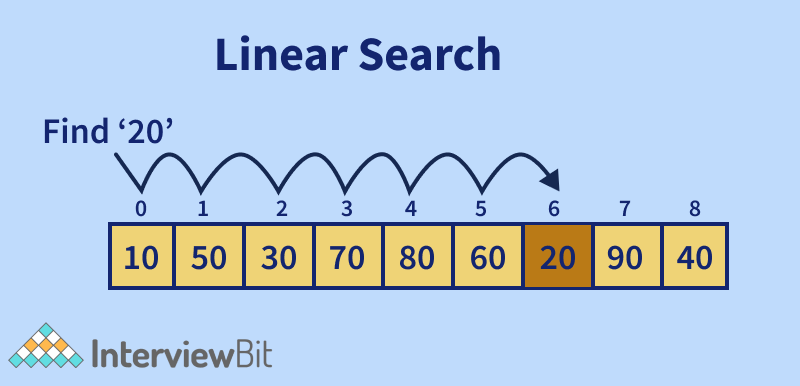
The time complexity of the Linear Search Algorithm is O(n) where n is the size of the list of elements and its space complexity is constant, that is, O(1).
Searching Algorithms are used to look for an element or get it from a data structure (usually a list of elements). These algorithms are divided into two categories based on the type of search operation:
A greedy algorithm is an algorithmic method that aims to choose the best optimal decision at each sub-step, eventually leading to a globally optimal solution. This means that the algorithm chooses the best answer available at the time, regardless of the consequences. In other words, when looking for an answer, an algorithm always selects the best immediate, or local, option. Greedy algorithms may identify less than perfect answers for some cases of other problems while finding the overall, ideal solution for some idealistic problems.
The Greedy algorithm is used in the following algorithms to find their solutions:
Divide and Conquer is an algorithm paradigm, not an algorithm itself. It is set up in such a way that it can handle a large amount of data, split it down into smaller chunks, and determine the solution to the problem for each of the smaller chunks. It combines all of the piecewise solutions of the smaller chunks to form a single global solution. This is known as the divide and conquer technique. The Divide and Conquer algorithmic paradigm employ the steps given below:
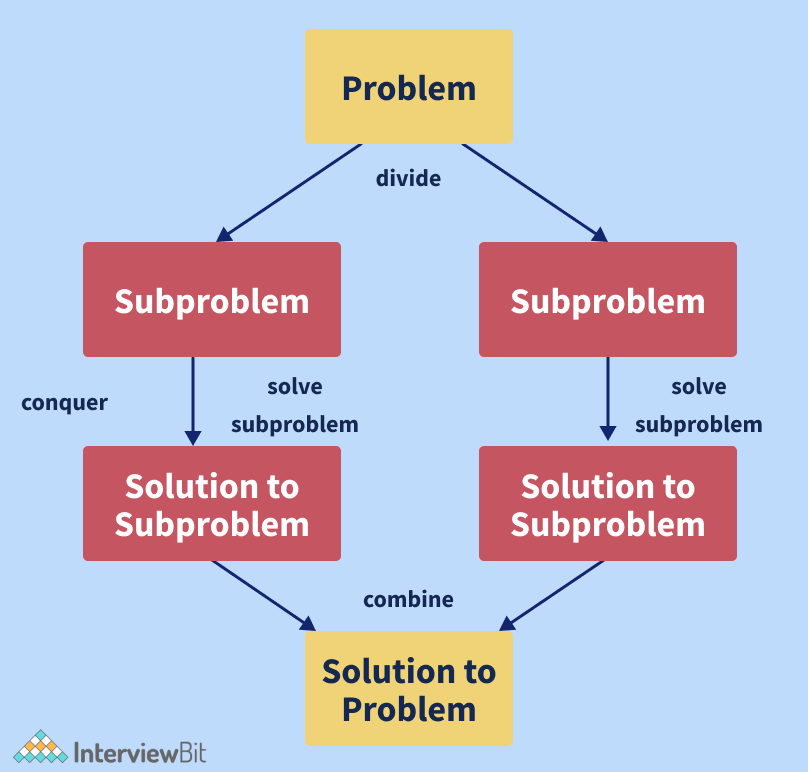
Some of the algorithms which use the Divide and Conquer Algorithmic paradigm are as follows:
Discover your path to a Discover your path to a Successful Tech Career for FREE! Successful Tech Career!
Answer 4 simple questions & get a career plan tailored for you Answer 4 simple questions & get a career plan tailored for you Interview Process CTC & Designation Projects on the Job Referral System 2 Lakh+ Roadmaps CreatedIt is a trick question that is frequently asked in the interviews of various companies. This problem can be solved in a variety of ways. However, while solving the problem, we must solve it without using a temporary variable, which is an essential condition. For this problem, if we can consider the possibility of integer overflow in our solution while coming up with an approach to solving it, we can make a great impression on interviewers.
Let us say that we have two integers a and b, with a's value equal to 5 and b's value equal to 6, and we want to swap them without needing a third variable. We will need to use Java programming constructs to solve this problem. Mathematical procedures such as addition, subtraction, multiplication, and division can be used to swap numbers. However, it is possible that it will cause an integer overflow problem.
Let us take a look at two approaches to solve this problem:
Using Addition and subtraction:
a = a + b; b = a - b; // this will act like (a+b) - b, and now b equals a. a = a - b; // this will act like (a+b) - a, and now an equals b.It is a clever trick. However, if the addition exceeds the maximum value of the int primitive type as defined by Integer.MAX_VALUE in Java, or if the subtraction is less than the minimum value of the int primitive type as defined by Integer.MIN_VALUE in Java, there will be an integer overflow.
Using the XOR method:
Another way to swap two integers without needing a third variable (temporary variable) is using the XOR method. This is often regarded as the best approach because it works in languages that do not handle integer overflows, such as Java, C, and C++. Java has a number of bitwise operators. XOR (denoted by ^) is one of them.
x = x ^ y; y = x ^ y; x = x ^ y;Asymptotic analysis is a technique that is used for determining the efficiency of an algorithm that does not rely on machine-specific constants and avoids the algorithm from comparing itself to the time-consuming approach. For asymptotic analysis, asymptotic notation is a mathematical technique that is used to indicate the temporal complexity of algorithms.
The following are the three most common asymptotic notations.
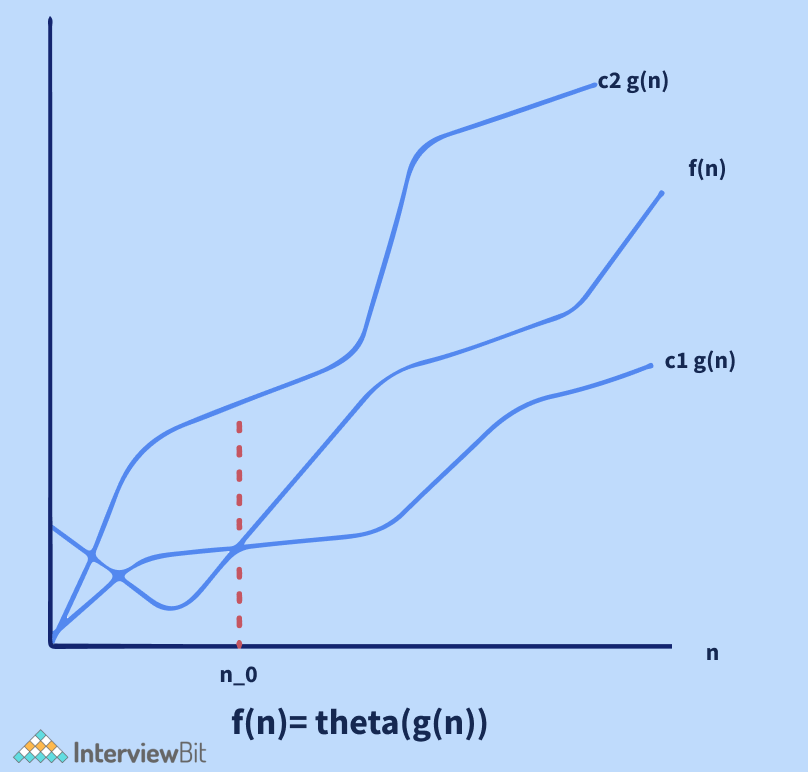
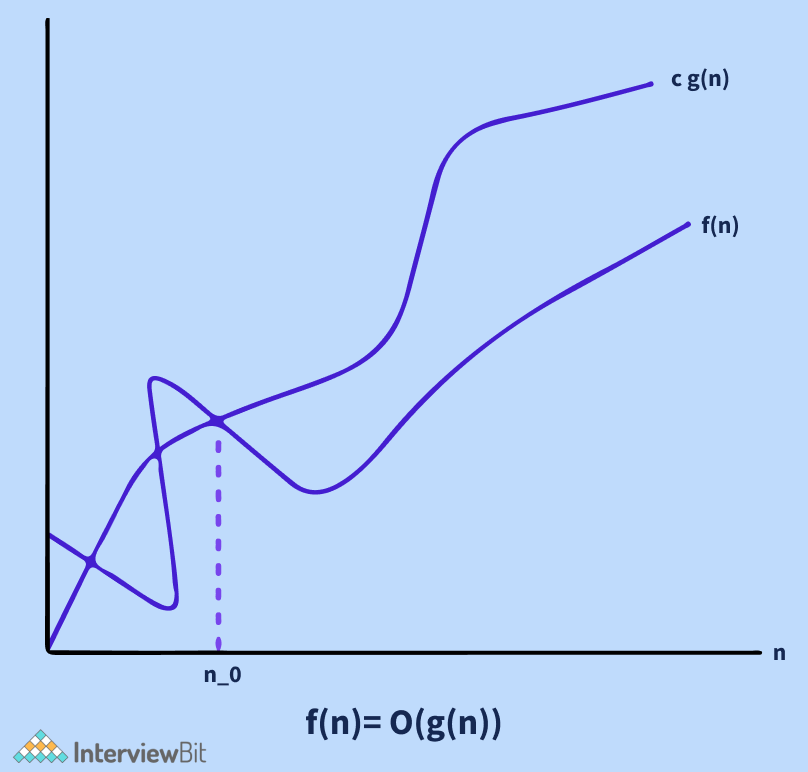
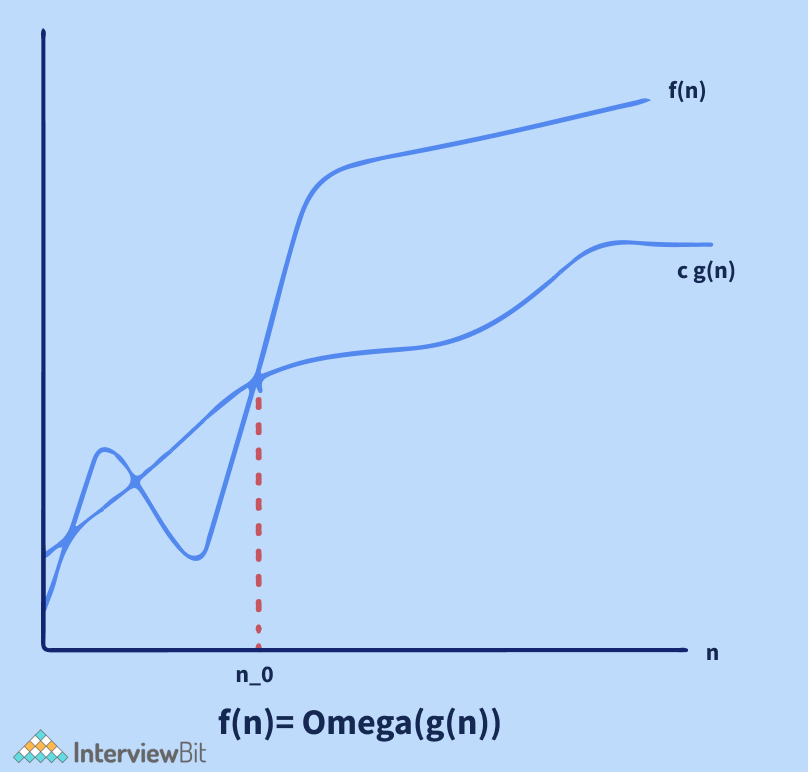
The mathematical foundation/framing of an algorithm's run time performance is defined by asymptotic analysis. We can easily determine the best case, average case, and worst-case scenarios of an algorithm using asymptotic analysis.
e process of transforming plaintext into a secret code format known as "Ciphertext'' is known as encryption. For calculations, this technique uses a string of bits known as "keys" to convert the text. The larger the key, the more potential patterns for producing ciphertext there are. The majority of encryption algorithms use fixed blocks of input with lengths ranging from 64 to 128 bits, while others use the stream technique.
Selection sort is an in-place sorting method, which implies it does not require any additional or minimal data storage. Therefore, the selection sort algorithm has a constant space complexity or O(1) space complexity.
So, in conclusion, we would like to convey to our readers that the Algorithm Interviews are usually the most crucial and tough interviews of all in the Recruitment process of a lot of Software Companies and a sound understanding of Algorithms usually implies that the candidate is very good in logical thinking and has the ability to think out of the box. Algorithm interview questions can be easily solved if one has a sound understanding of Algorithms and has gone through a lot of Algorithm Examples and Algorithm MCQs (which we will be covering in the next section of this article). Therefore, we suggest to all the budding coders of today to develop a strong grasp on the various Algorithms that have been discovered to date so that they can ace their next Technical Interviews.
Useful Resources:
Insertion sort is an in-place sorting method, which implies it does not require any additional or minimal data storage. In insertion sort, only a single list element must be stored outside of the starting data, resulting in a constant space complexity or O(1) space complexity.
Heap sort is a comparison-based sorting algorithm. Heapsort is similar to selection sort in that it separates its input into a sorted and an unsorted region, then successively decreases the unsorted part by taking the largest element from it and putting it into the sorted region. Unlike selection sort, heapsort does not waste time scanning the unsorted region in linear time; instead, heap sort keeps the unsorted region in a heap data structure to identify the largest element in each step more rapidly. Let us take a look at the heap sort algorithm:
The Heapsort algorithm starts by converting the list to a max heap. The algorithm then swaps the first and last values in the list, reducing the range of values considered in the heap operation by one, and filters the new first value into its heap place. This process is repeated until the range of values considered is only one value long.
Note: The buildMaxHeap() operation runs only one time with a linear time complexity or O(n) time complexity. The siftDown() function works in O(log n) time complexity, and is called n times. Therefore, the overall time complexity of the heap sort algorithm is O(n + n log (n)) = O(n log n).
The process of visiting all the nodes of a tree is known as tree traversal.
Some of the algorithms to traverse a binary tree are as follows:
Note: Both sorting strategies keep two sub-lists, sorted and unsorted, and place one element at a time into the sorted sub-list. Insertion sort takes the currently selected element and places it in the sorted array at the right point while keeping the insertion sort attributes. Selection sort, on the other hand, looks for the smallest element in an unsorted sub-list and replaces it with the current element.
An algorithm to insert a node in a Binary Search Tree is given below:
Recursive algorithm is a way of tackling a difficult problem by breaking it down into smaller and smaller subproblems until the problem is small enough to be solved quickly. It usually involves a function that calls itself (property of recursive functions).
The three laws which must be followed by all recursive algorithms are as follows:
No, we cannot use the binary search algorithm for linked lists.
Explanation: Because random access is not allowed in linked lists, reaching the middle element in constant or O(1) time is impossible. As a result, the usage of a binary search algorithm on a linked list is not possible.
Dijkstra's algorithm is a method for determining the shortest pathways between nodes in a graph, which might be used to depict road networks. Edsger W. Dijkstra, a computer scientist, conceived it in 1956 and published it three years later. There are numerous variations of the algorithm. The original Dijkstra algorithm discovered the shortest path between two nodes, but a more frequent form fixes a single node as the "source" node and finds the shortest pathways from the source to all other nodes in the network, resulting in a shortest-path tree. Let us take a look at Dijkstra's Algorithm to find the shortest path between a given node in a graph to any other node in the graph:
Let us call the node where we are starting the process as the initial node. Let the distance from the initial node to Y be the distance of node Y. Dijkstra's algorithm will begin with unlimited distances and attempt to improve them incrementally.
It is not required to wait until the target node is "visited" as described above while constructing a route: the algorithm can end once the destination node has the least tentative distance among all "unvisited" nodes (and thus could be selected as the next "current"). For arbitrary directed graphs with unbounded non-negative weights, Dijkstra's algorithm is asymptotically the fastest known single-source shortest path algorithm with time complexity of O(|E| + |V|log(|V|)), where |V| is the number of nodes and|E| is the number of edges in the graph.
Kadane's algorithm can be used to find the maximum subarray sum for a given array. From left to right, Kadane's algorithm searches the provided array. It then computes the subarray with the largest sum ending at position j in the jth step, and this sum is stored in the variable "currentSum". Furthermore, it computes the subarray with the biggest sum anywhere in the subarray starting from the first position to the jth position, that is, in A[1. j], and stores it in the variable "bestSum". This is done by taking the maximum value of the variable "currentSum" till now and then storing it in the variable "bestSum". In the end, the value of "bestSum" is returned as the final answer to our problem.
Formally, Kadane's algorithm can be stated as follows:
Bubble sort, also known as sinking sort, is a basic sorting algorithm that iterates through a list, comparing neighbouring elements and swapping them if they are out of order. The list is sent through again and again until it is sorted. The comparison sort method is named from the manner that smaller or larger components "bubble" to the top of the list. This simplistic method performs badly in real-world situations and is mostly used as a teaching aid. Let us take an example to understand how bubble sort works:
Let us assume that the array to be sorted is (50 10 40 20 80). The various passes or rounds of bubble sort are given below:
The array is now sorted, but our algorithm is unsure whether it is complete. To know if the algorithm is sorted, it must complete one complete pass without any swaps.
Quicksort is a sorting algorithm that is in place (in-place algorithm is an algorithm that transforms input using no auxiliary data structure). It was created by the British computer scientist Tony Hoare in 1959 and was published in 1961, and it is still a popular sorting algorithm. It can be somewhat quicker than merge sort and two or three times faster than heapsort when properly done.
Quicksort is based on the divide and conquer algorithmic paradigm. It operates by picking a 'pivot' element from the array and separating the other elements into two subarrays based on whether they are greater or less than the pivot. As a result, it is also known as partition exchange sort. The subarrays are then recursively sorted. This can be done in place, with only a little amount of additional RAM (Random Access Memory) required for sorting.
Quicksort is a comparison sorting algorithm, which means it can sort objects of any type that have a "less-than" relation (technically, a total order) declared for them. Quicksort is not a stable sort, which means that the relative order of equal sort items is not retained in efficient implementations. Quicksort (like the partition method) must be written in such a way that it can be called for a range within a bigger array, even if the end purpose is to sort the entire array, due to its recursive nature.
The following are the steps for in-place quicksort:
Quicksort's mathematical analysis reveals that, on average, it takes O(nlog (n) time complexity to sort n items. In the worst-case scenario, it performs in time complexity of O(n^2).
Note: The algorithm's performance can be influenced by the partition routine (including the pivot selection) and other details not fully defined above, possibly to a large extent for specific input arrays. It is therefore crucial to define these alternatives before discussing quicksort's efficiency.
Merge sort (also known as mergesort) is a general-purpose, comparison-based sorting algorithm developed in computer science. The majority of its implementations result in a stable sort, which indicates that the order of equal elements in the input and output is the same. In 1945, John von Neumann devised the merge sort method, which is a divide and conquer algorithm. The following is how a merge sort works conceptually:
The time complexity of the Merge Sort Algorithm is O(nlog(n)) where n is the size of the list of the elements to be sorted while the space complexity of the Merge Sort Algorithm is O(n), that is, linear space complexity.
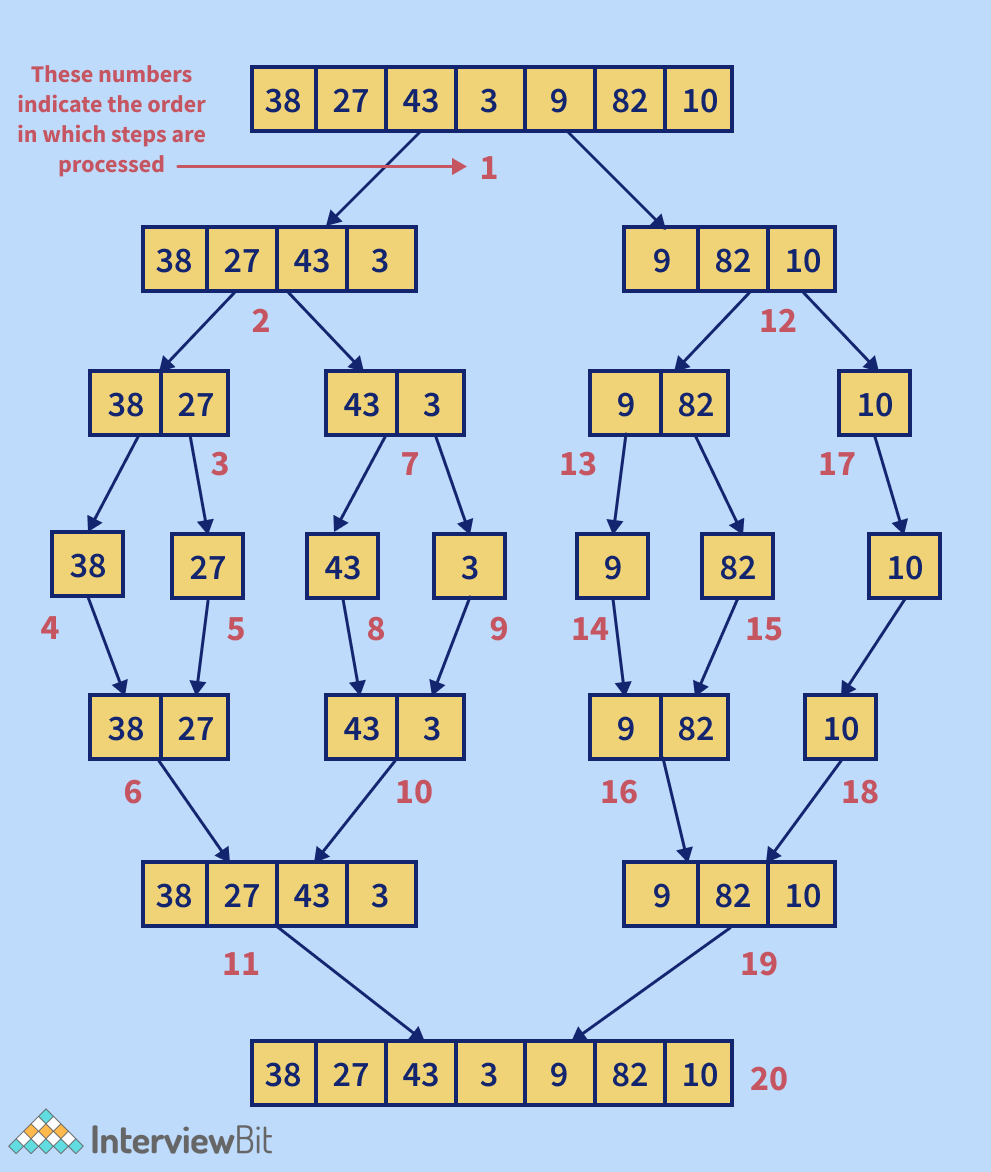
A few of the most widely used cryptographic algorithms are as follows:
Which of the following algorithms can be used to solve the Maximum Subarray Problem?